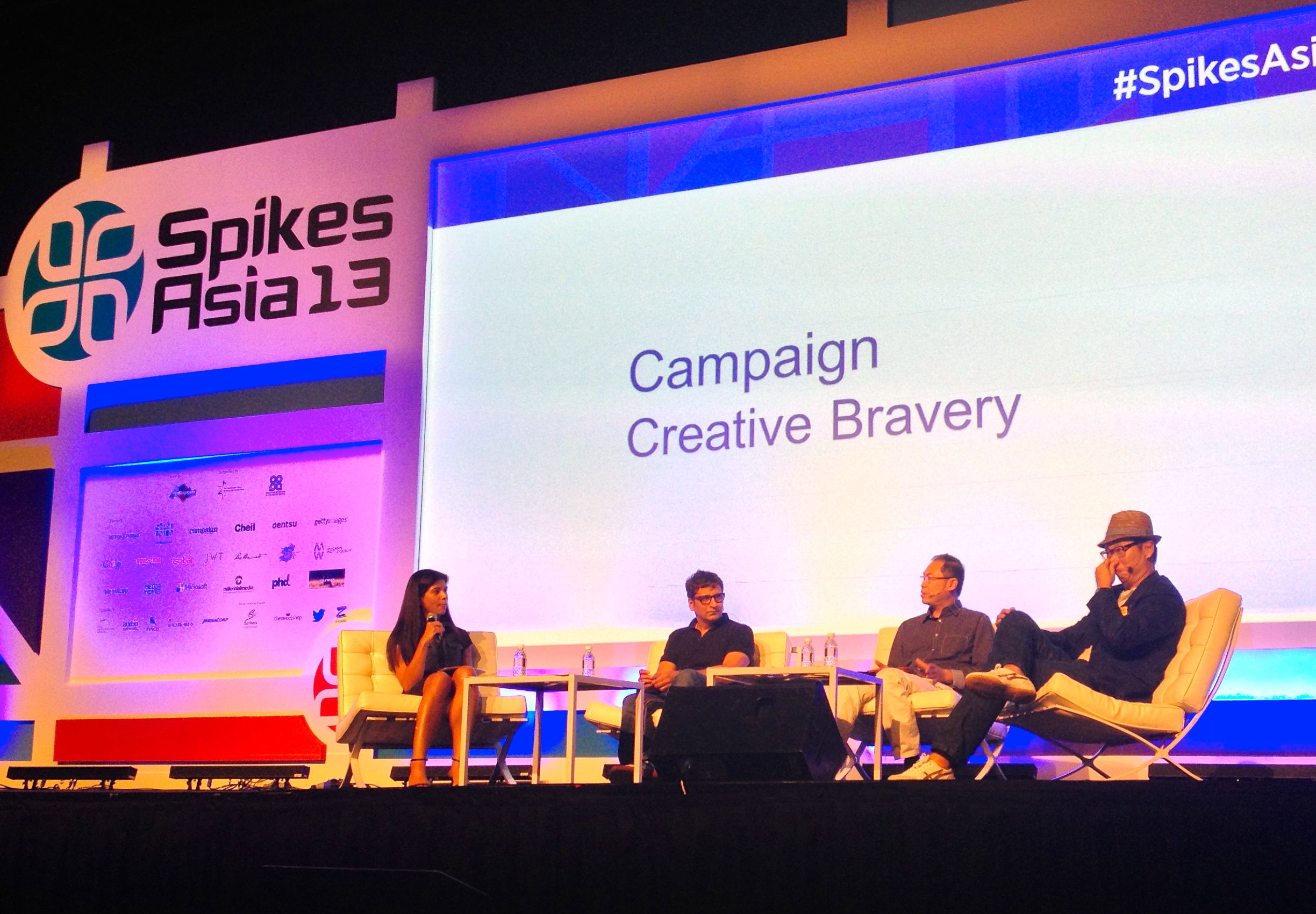Moderated by Atifa Silk, editorial director of Campaign Asia-Pacific, the panel aimed at exploring why scale, authenticity and social change are moving big ideas away from advertising, and how agencies can build cultures that produce brave work.
While Sonal Dabral, chairman and CCO of DDB Mudra Group India and Tay Guan Hin, regional ECD of Southeast Asia at JWT, both felt that Asian creatives and clients were not lacking in bravery, Soh challenged his audience to think bigger than just brave advertising.
“Creative bravery can be seen in these two social driving apps: Waze and SmileDrive by Volkswagen," he said. "Now, Google has just bought Waze for $1 billion while the agency that developed SmileDrive has well... earned its retainer fee. Just ask yourself, which method makes more money?”
There is no doubt that agencies are capable of great work. Often this work isn't allowed to shine due to constraints placed on agencies by clients or an overemphasis placed on time rather than quality, he continued.
Dabral, however, believes that a large part of the problem lies with greedy attention-craving young creatives who don't take the time to understand the client's product.
“Don't underestimate the kind of power you have," Dabral said. "Don't waste it on the small stuff. We have the power to change things. We can change people's opinions, attitudes, bring about a difference. Much maligning has been done about current advertising. We need to change it and have respect.”
Soh, however, argued that this sort of work may be wasted in advertising. “I just gave a talk at SXSW and saw the kind of optimism, this belief that they could change the world among the startup guys, that the ad industry used to have," Soh said. "They don't believe they need advertising. 'If I have to advertise my product, I have the wrong idea,' they say. Google or Facebook didn't have to advertise 10 years ago.”
He further elaborated his point after the panel screened the first of four campaigns selected as 'creatively brave' work: Samsung's Bridge of Life.
Soh asked why this idea had to be confined to just Samsung and just Korea. “Why isn't it on more bridges around the world? Why didn't the agency innovate this idea and then sold it to clients?”
He asked a similar question for the second campaign, Smart Txtbks.
Again Soh asked, “Couldn't the agency have owned the idea and sold it to other telcos so the reach is greater? Right now it's confined to one client and that one's not paying much because it's CSR.”
Dabral disagreed that the agency had thought too small. “Coming up with the idea was brave, getting the client to agree was brave, carrying it out was brave,” Dabral said.
Tay argued that these projects must start small for clients to buy them and if they succeed and the client starts believing, then more money is invested. Smaller projects are also more likely to motivate creative teams who are less afraid of failure.
Sometimes, bravery is holding true to what your brand stands for, noted the creatives, in the case of Coca-Cola's “Share a Can” campaign, continued Tay.
“Coke, ever since its 1971 ad 'I'd like to teach the world to sing' has forwarded its single-minded proposition of happiness to create great work. It takes bravery to stick to a brand idea—most clients want to change every three years,” said Tay.
Agencies, said Soh, should be more like doctors. “When a doctor tells you what to take, do you say 'I'll only take these two medicines... for only these days... and if I don't get better, I'll blame you'? You don't, but this is what agencies put up with all the time,” he said. “I've been dying to say this ever since I left the agencies.”
The bravest ideas, said Dabral, are often not about the technology that makes them possible but the ability to root these ideas, such as the Bridge of Life, in humanity. In the case of Starhub's Third Eye campaign, he said that for all the innovative technology involved, what you see is the humanity. The crowdsourcing of vision.
“All these cases you see it's great work that's great for business,” observed Tay. “Starhub is earning from all the data their blind subscribers are using.... and I agree with Calvin [Soh], you can see the potential for this to be bigger than one brand.”
If these ideas extend beyond one brand, said Dabral, "It will be a real victory for our profession."
The article first appeared on campaignasia.com

